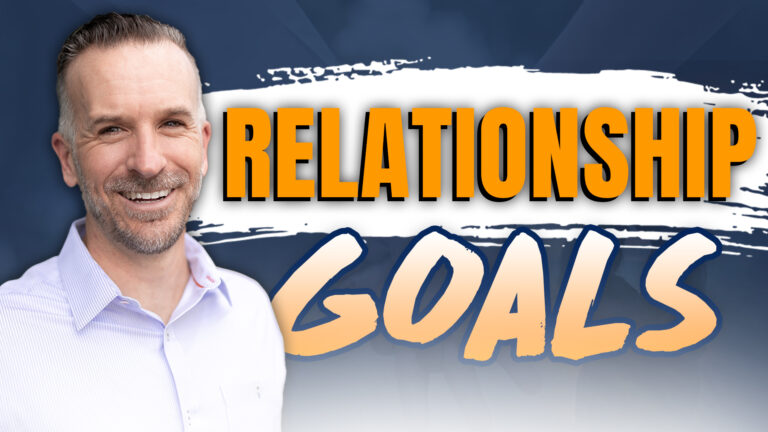Three Things: How to Quit Proof Your Goals in 2023
In this issue of “3 Things”, I’m going to share three ways you can “Quit Proof” your goals for 2023 so that you can remain committed, convicted, and consistent. I elaborate on these three things in my recent YouTube episode of Flow Over Fear.
TL/DR:
- Get absolute clarity on your goals.
- Organize your goals for FLOW.
- Measure your results against where you came from, not the results of others.
When you set big goals for yourself in the new year, it’s easy to get excited about the idea of a “new you”. You are certain your committed. There’s no turning back. This is it… the year you finally do the thing.
Then, sometime around February or March, we burn out, get bored, get distracted (or some combination of the three), and give up before giving our dream an opportunity to blossom into the beautiful flower it is.
The result is that we fall into a vicious cycle. The impulsive goals we set for ourselves become impulsive actions that lead, at first, to incredible progress over the first few weeks (the honeymoon phase). Then, after our willpower wears out, we burnout, give up, and go back to our old habits, frustrated that we didn’t meet our goals. We become part of the statistic that says 92% of people give up on their New Year’s resolutions. In that pity party we stay until we decide to take impulsive action on an impulsive dream yet again.
How do we avoid the dreaded “February Fail” or “March… um… Malfunction”, AKA the quitting point? As the title of this newsletter suggests, there are three things that can help you stay committed and consistent – “quit proof”.
Even when it’s hard.
1. Provide Clarity to Your Goals:
A lot of times, the reason that people aren’t committed to their goals is because they’re not their goals at all. They are someone else’s goals. Does it sound ludicrous that a person would pursue a goal that isn’t their goal? Have you ever pursued the unattainable goal of getting six pack abs? If so, there’s your answer. Nobody in the history of the world ever has had an internal personal burning desire to get six pack abs. That is your belief of what society expects of you. So you internalize it as your goal.
Only it isn’t your goal.
Same with endless other goals that have superficial results that have zero meaning to you other than they might impress other people.
So the first part of getting clarity on your goals is to make sure that they are, in fact, YOUR goals – that they come from your heart. That they have a deep and powerful meaning to you. That they are aligned with your values. And (importantly) they scare you and excite you in equal measure.
The other part of clarity is making sure your goals are SMART – Specific, measurable, achievable, relevant, and timely. If you can give an emphatic thumbs up to each of those elements, then you have clarity on your goal.
2. Organize for Flow:
Why do we tend to give up on our goals in February or March? Because ultimately our attention span around goals lasts only about 90 days. After that, we get distracted or bored. Shiny objects seem to get just a little bit shinier. Other priorities tend to get in the way. The 90 day mark is also when we start to plateau with progress. Thus we begin to get frustrated or demoralized because we’re not seeing the results we once did.
The way to hack the system, so to speak, is to chunk those big goals down into smaller 90 day goals that will progress you toward the bigger goal. This is a concept that is introduced in the book Traction by Gino Wickman called 90 Day Rocks. These rocks are SMART, so there is a definitive success that comes with the completion of each one. Since they reset every 90 days, they keep us focused. Every 90 days, we reevaluate and set new rocks for the next quarter so that we continue to make progress on our longer term goal. We avoid boredom and burnout because we’re achieving, reassessing, and resetting.
One step down from 90 day rocks is the weekly tasks. What are the things you need to accomplish this week in order to get you closer to your quarterly rocks (and ultimately your longer term goals)? You should have around 5-10 items on your weekly task list so that you can stay on track and not overwhelm yourself.
Finally, you can pull 2-3 items from your weekly task list to form a daily to do list. This to do list narrows your focus down to the daily detail so that you can ask yourself this question daily:
What is the thing I need to accomplish today in order to get me closer to my long term goal?
You may have heard Tony Robbins say that where focus goes, energy flows? It is also true that where focus goes, flow follows.
3. Measure your progress based on where you came from, not comparison to other people:
What gets measured gets managed.
This is absolutely a true statement. We tend to put greater focus on the things that get measured. This is why it’s important to be intentional about how we measure.
Here’s the interesting thing, regardless of if we measure our results or not, we are measuring ourselves. In a vacuum, our minds will gravitate toward unhealthy comparison. We compare ourselves to the success of others, we compare ourselves to the things we haven’t achieved yet, we compare ourselves to unrealistic expectations. This, of course leads to frustration, burnout, and (yup!) quitting.
When we control the measurements, however, we are setting the goal line for ourselves. The great thing about intentional measurements is that we measure against where we came from. We measure progress, which is infinitely more rewarding than comparison. Measuring progress keeps us on track toward our longer term goal, as opposed to circling around the chaos of comparison.
The result that you will see from implementing these three steps to quit proofing your goals will be greater joy in the journey toward success. When we enjoy the journey, and we have a strategy to remain disciplined as laid out above, we are much more likely to find success and fulfillment over the long term. It’s the difference between being on the vicious cycle of burnout and frustration, and being on the virtuous cycle of achievement and fulfillment.
This is what I have experienced in many areas of my life, including finding the discipline to go from complete non-athlete to qualifying for the Ironman World Championship. It’s how we continue to improve in our 100 year old company. It’s how athletes and professionals that I have worked with over the years have gone from feeling frustrated and stuck, to crossing the finish lines on their own big goals time and time again.
If you would like to dive deeper into the process of setting quit-proof goals, rising above fear, and realizing your ultimate potential, reach out to me for a free strategy call. I look forward to hearing from you!







